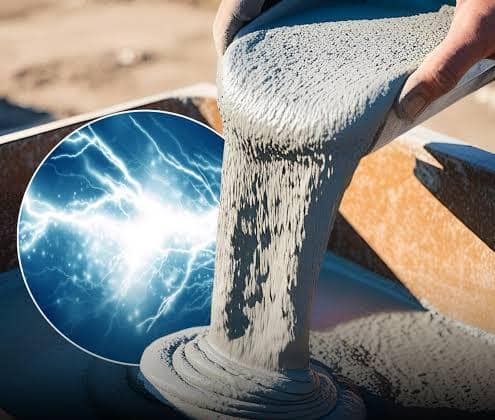Imagine the walls of your home acting like a giant, sustainable battery. This isn’t science fiction anymore. Researchers are developing a revolutionary new building material: living cement capable of generating its own electricity.
While traditional cement is a passive, energy-intensive material, this innovative bio-integrated cement could turn our future infrastructure—from bridges to high-rises—into active power generators.
The Breakthrough: Plugging In a Bacterium
The secret to this incredible advance lies not in complex circuitry, but in biology. A team of Danish researchers at Aarhus University is pioneering the technique by incorporating a specific type of microorganism directly into the cement structure.
The organism in question is the bacterium Shewanella oneidensis. This microbe is naturally known for its ability to transfer electrons outside of its cell. Scientists have ingeniously leveraged this trait, essentially “plugging” the bacteria into the cement matrix to capture the electrons and generate an electrical current.
In essence, the material becomes a giant, resilient microbial fuel cell.
Early Stages, Limitless Potential
The scientists have successfully demonstrated the principle by connecting a few blocks of the bio-cement and managing to light a small LED lamp. While this is a small-scale prototype, it confirms the technology’s potential.
This isn’t just about generating power; the new material is also designed for longevity. The researchers have developed a microfluidic system to keep the bacterial colonies alive, ensuring they receive the necessary nutrients. This allows the cement to potentially regenerate its energy-producing capacity, making it far more durable and sustainable than conventional materials.
What could this mean for the future?
• Self-Sustaining Buildings: Structures could generate enough electricity for basic sensors, small devices, or auxiliary power needs.
• Decentralized Power: Entire infrastructures—from roads and tunnels to apartment buildings—could become generators, easing the strain on centralized power grids.
• Cleaner Construction: Integrating biotechnology into building materials pushes construction away from fossil fuel dependence and toward clean, bio-based energy sources.
The technology is still in the testing phase, requiring significant research before it can be scaled for widespread use. However, this breakthrough signals a massive shift in construction, where our buildings are no longer just shelters, but active, power-generating partners in a sustainable future.
Stay tuned; the walls of tomorrow might be breathing and charging today!.





Join The Discussion